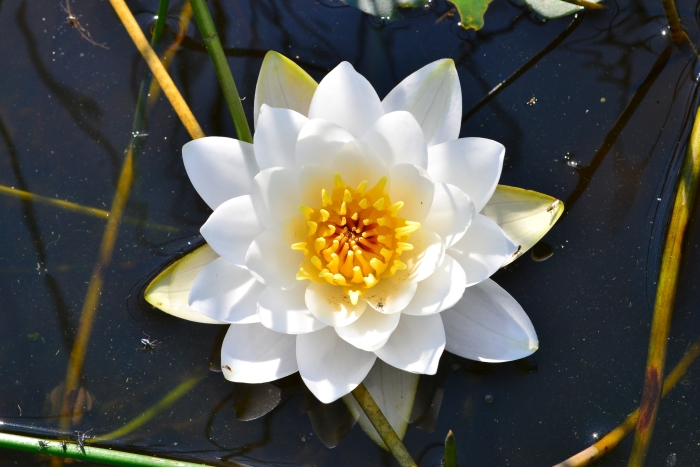Dwarf White Water Lily
(Nymphaea candida)
Dwarf White Water Lily (Nymphaea candida)
/
/

Александр Тихонов
CC BY 4.0
Image By:
Александр Тихонов
Recorded By:
Copyright:
CC BY 4.0
Copyright Notice:
Photo by: Александр Тихонов | License Type: CC BY 4.0 | License URL: http://creativecommons.org/licenses/by/4.0/ | Rights Holder: Александр Тихонов | Publisher: iNaturalist | Date Created: 2013-08-09T11:55:14-07:00 |























Estimated Native Range
Summary
Nymphaea candida, commonly known as Dwarf White Water Lily, is an aquatic perennial herb native to still or slow-moving freshwater habitats across Eurasia, including lakes, ponds, and slow-flowing streams. It thrives in water depths of 24-31 inches (60-80 cm) and is often found in the shallow margins of its aquatic environments. The plant features floating, heart-shaped leaves that provide shade and shelter for aquatic life. From July to August, it produces small, fragrant white flowers with a yellow center, which float on the water’s surface and are highly ornamental. The flowers are showy and can add a serene beauty to any water garden.
The Dwarf White Water Lily is valued for its ability to provide aesthetic appeal to water gardens and ponds, as well as its ecological role in providing habitat for aquatic organisms. It is relatively low maintenance, requiring only still or slow-moving water and full sun to partial shade to thrive. While it is not typically used for culinary or medicinal purposes, its presence can enhance the biodiversity of pond ecosystems. Gardeners should be aware that, although not aggressive, the plant can spread through rhizomes and may need to be managed to prevent overgrowth. It is generally free from serious pests and diseases.CC BY-SA 4.0
The Dwarf White Water Lily is valued for its ability to provide aesthetic appeal to water gardens and ponds, as well as its ecological role in providing habitat for aquatic organisms. It is relatively low maintenance, requiring only still or slow-moving water and full sun to partial shade to thrive. While it is not typically used for culinary or medicinal purposes, its presence can enhance the biodiversity of pond ecosystems. Gardeners should be aware that, although not aggressive, the plant can spread through rhizomes and may need to be managed to prevent overgrowth. It is generally free from serious pests and diseases.CC BY-SA 4.0
Plant Description
- Plant Type: Herb
- Height: 0.2-0.3 feet
- Width: 2-3 feet
- Growth Rate: Moderate
- Flower Color: White
- Flowering Season: Summer
- Leaf Retention: Deciduous
Growth Requirements
- Sun: Full Sun
- Water: Aquatic
- Drainage: Standing
Common Uses
Border Plant, Low Maintenance, Water Garden
Natural Habitat
Still or slow-moving freshwater habitats across Eurasia, including lakes, ponds, and slow-flowing streams
Other Names
Common Names: White Lotus , European White Waterlily , Kleine Seerose
Scientific Names: Nymphaea candida , ? erythrostigma , ? patula , ? xanthostigma , Castalia candida , Castalia candida f. aperta , Castalia candida f. campanulata , Castalia candida f. erythrostigma , Castalia candida f. patula , Castalia candida f. semiaperta
GBIF Accepted Name: